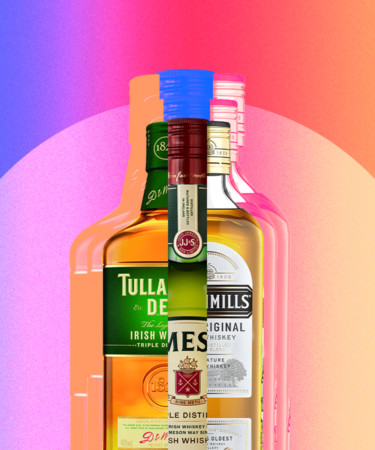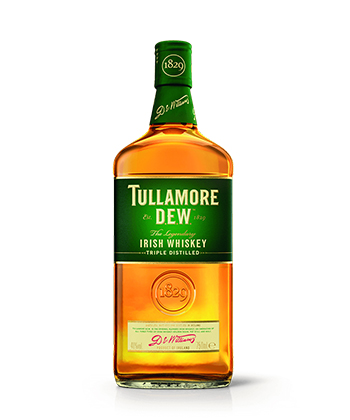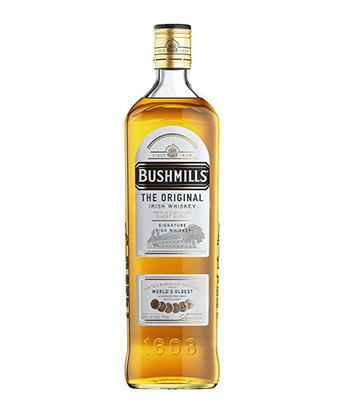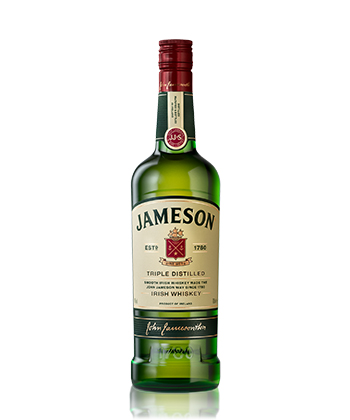Whether sipped neat, with a splash of water, or in coffee, Americans can’t get enough Irish whiskey. According to The Spirits Business, in 2020 Irish whiskey sales in the United States totaled $1.1 billion in revenue, adding to an already impressive run of increasing sales for over a decade.
Three venerable brands — Jameson, Bushmills, and Tullamore D.E.W. — have all held their ground as gold standards in the Irish whiskey category. And while many fans turn to the nostalgia of each brand’s original or flagship expression, there are multiple styles even diehard fans may not yet have explored.
From the oldest licensed distillery to an Irish whiskey made by the world’s top seller, keep reading to learn more about these Emerald Isle treasures that continue to charm American palates.
Origin
On each Bushmills bottle is the year 1608 — a tribute to its history as the oldest licensed Irish whiskey distillery in the world. As the story goes, King James I originally granted founder Sir Thomas Phillips permission to open the distillery in the town of Bushmills.
Surprisingly, Jameson, the world’s best-selling Irish whiskey, was founded by a Scottish native. In 1780, John Jameson, a sheriff clerk by trade, traveled from his homeland to Dublin, already known for its burgeoning whiskey industry. It was there that he purchased Jameson’s original Bow Street Distillery.
The youngest of the three, Tullamore D.E.W., was established in 1829 in the town of Tullamore, Ireland. Originally operated by the Molloy family, it was eventually passed to Daniel Edmund Williams (D.E.W.), who had worked at the distillery for years as a young man.
Alcohol Content
Jameson, Bushmills, and Tullamore D.E.W. are all bottled at 80 proof. However, each brand offers higher-proof expressions for those who want something a bit more potent. Bushmills’ The Rare Casks #01 comes in at 93.4 proof, Tullamore D.E.W.’s Old Bonded Warehouse Release is bottled at 92 proof, and Jameson’s Bow Street 18 Years is bottled at 110.6 proof.
Flavor
For one VinePair writer, Jameson’s classic triple-distilled blended whiskey shows notes of grass and fruit, with honey and vanilla, while the Jameson Black Barrel receives high marks for notes of toffee, banana, and ripe peaches on the nose. Caramel, oat, and toasted oak round out the whiskey’s complex palate.
Tullamore D.E.W.’s 14-Year-Old Four Cask Finish, also reviewed by VinePair, is a clear favorite. Finished in four different casks (sherry, port, bourbon, and Madeira), the whiskey shows aromas of tobacco and leather, with clove, licorice, black pepper, and golden raisin to taste.
Bushmills’ Black Bush proves to be an easy sipper, with citrus, grape, and biscuit-like notes. Another VinePair favorite, the Single Malt 10-Year, has characteristics of leather, earth, dried apples, honey, and spice.
Use in Cocktails
The Irish Coffee is a classic application for Irish whiskey, and while Jameson is usually the go-to choice, Bushmills or Tullamore D.E.W. could also be a perfect substitute. While colder days may be fleeting, the Hot Toddy is another traditional vessel for Irish whiskey. Combined with hot water, lemon, and honey, it may be the only Irish whiskey cocktail with a reputation for medicinal use.
Popularity
While Jameson continues to dominate the market, Irish whiskey drinkers still flock to other options like Bushmills and Tullamore D.E.W., boosting sales figures for the entire category.
But the category’s general popularity comes as no surprise. According to Chris Swonger, president and CEO of the Distilled Spirits Council, American drinkers enjoy Irish whiskey because of its “lighter, sweeter flavour profile” and “its rich heritage as one of the world’s first whiskeys.”
For bartenders, Irish whiskey’s approachability and range of styles make it an increasingly interesting option in cocktails. As Shane Mulvany, a bartender at New York’s Dead Rabbit explained to VinePair, “There’s a huge chance to develop Irish whiskey through the cocktail program in the same way that bourbon started getting really popular through cocktails.”



